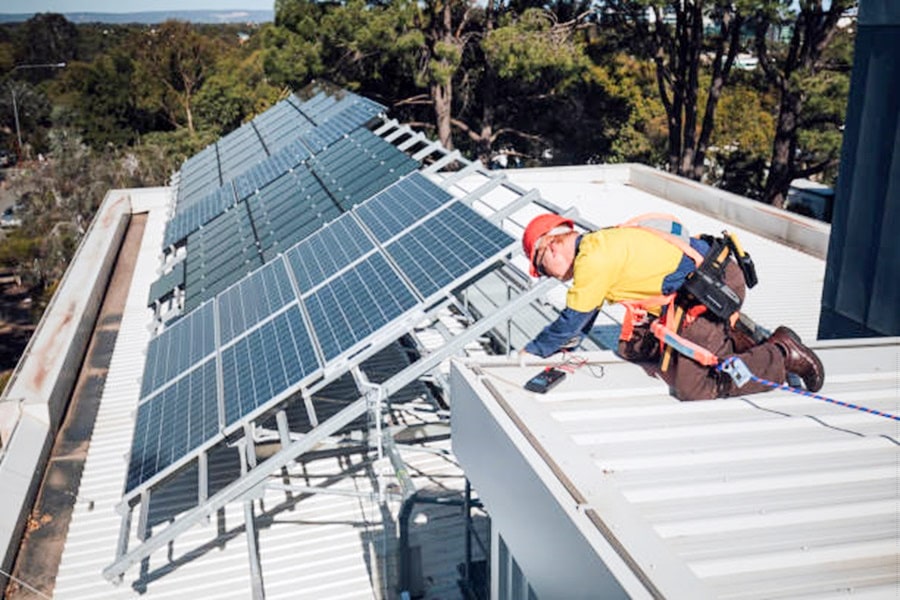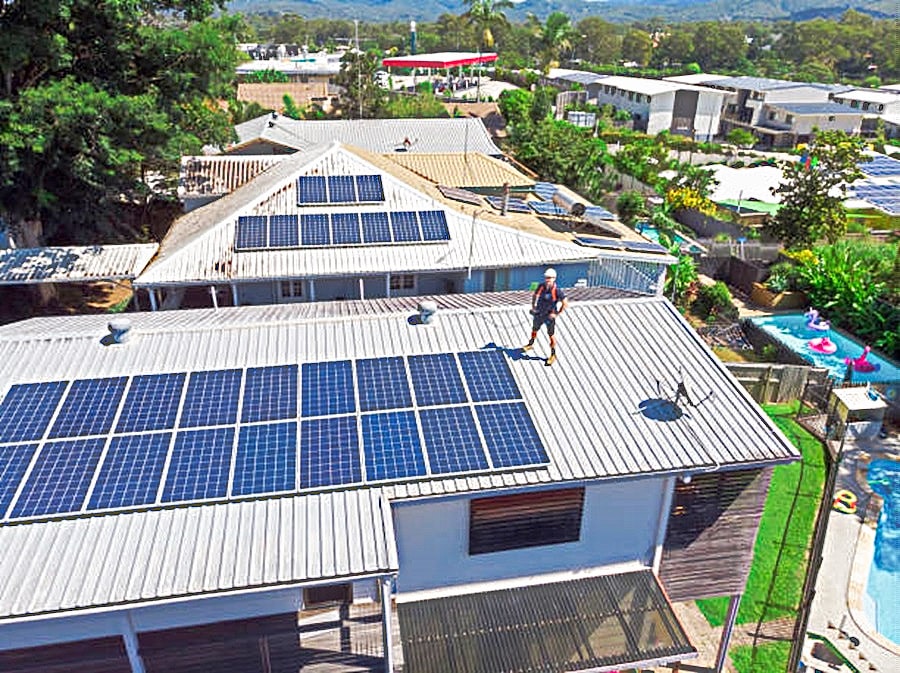Australia is a world leader in rooftop solar power, with over 3 million homes boasting solar panels. This widespread adoption of solar technology is a testament to Australia’s commitment to renewable energy and reducing reliance on fossil fuels. However, some homeowners with solar panels in Australia and battery storage systems have encountered a puzzling phenomenon – their systems pull electricity from the grid even when the batteries are charged. This seemingly counterintuitive situation can be explained by several factors in Australia’s unique energy landscape.
Understanding the system
Not a simple on/off switch: Solar power systems are designed to prioritise self-consumption, meaning using the generated electricity before relying on the grid. Batteries further enhance this by storing excess solar energy for later use. However, the system operation could be a more complex on/off switch between solar, battery, and grid.
A typical solar-powered home with battery storage operates under the principle of self-consumption. During daylight hours, sunlight hits the solar panels, generating electricity. This electricity can power the home directly (directly consumed) or be stored in batteries for later use (battery storage). Any excess generation beyond the home’s immediate needs is often exported back to the grid, potentially earning the homeowner feed-in tariffs from their electricity retailer.
Ready to upgrade your solar systems and take your energy savings to the next level? Embrace the energy efficiency revolution by upgrading your solar systems and adding a battery or solar inverters with Energy Matters.
With our 3 free solar quotes, you can compare plans from pre-qualified and vetted installers in your area and find the perfect solution for your home and business. Harness the sun’s power and save money on electricity bills while reducing environmental impact. Let Energy Matters guide you towards a brighter, more sustainable future.
Several reasons can explain why a solar system with charged batteries might still pull electricity from the grid:
- Time discrepancy between solar generation and consumption: Solar panels only generate electricity during daylight hours. However, household energy consumption patterns often peak in the evenings when solar production is minimal. In this scenario, even with charged batteries, the system might need to draw from the grid to meet the current demand.
- Battery discharge rates: Batteries have limitations on how quickly they can discharge power. If a household experiences a sudden surge in demand, like turning on multiple appliances simultaneously, the batteries might not be able to supply the required power fast enough. To prevent a blackout, the system may automatically switch to the grid to meet the immediate peak demand.
- System optimisation settings: Some solar battery systems can be programmed to prioritise grid stability or optimise self-consumption. If the system prioritises grid stability, it might export excess solar energy during the day and then import power during peak grid demand periods to help balance the load on the grid. This can benefit the electricity network but might seem counterintuitive for individual homeowners.
- Financial incentives: Feed-in tariffs, which incentivise homeowners to export solar energy back to the grid, might be higher during certain times of the day. In such cases, the system might be financially advantageous in exporting excess solar power during the day and importing cheaper grid power at night.
- System maintenance or faults: In rare cases, technical issues with the solar system or battery storage unit might cause the system to pull from the grid even when the batteries are charged. Regular system maintenance is important to ensure optimal performance.
To find out how much a solar system with storage or even an EV charger will cost, try our easy-to-use solar power and battery storage calculator! It will generate performance data and possible cost savings.
We can forward your information to 3 trusted local installers in your area to obtain free, no-obligation solar quotes.
Find out how much you can expect to pay for solar
Ready to find out more? Get FREE quotes for solar, batteries + more
*Prices quoted are to be used as a guide only and do not factor in state and other rebates and incentives. Includes STC discount.
The Australian Energy Market
The specific dynamics of Australia’s energy market also play a role:
- High wholesale electricity prices: Australia has experienced significant price fluctuations recently. These price spikes can make grid-supplied power more expensive during peak demand periods. However, even with charged batteries, the system might prioritise drawing from the grid if the grid price is lower than the feed-in tariff for exporting solar energy.
- Network charges and time-of-use tariffs: Some electricity retailers offer time-of-use tariffs where electricity costs fluctuate depending on the time of day. In such scenarios, the system might strategically draw from the grid during off-peak hours when electricity prices are lower, even if batteries are charged.

Optimising your solar system
Understanding the reasons behind grid draw can help homeowners optimise their solar battery systems for their specific needs. Here are some ways to achieve this:
- Monitor your system: Most solar battery systems have tools that allow homeowners to track energy generation, consumption, and grid interaction. Analysing this data can reveal patterns in grid draws and help identify potential areas for improvement.
- System programming: Some systems allow homeowners to adjust settings to prioritise self-consumption or grid stability. Working with a qualified solar installer can help determine the optimal settings based on individual needs and electricity prices.
- Time-of-use tariffs: If time-of-use tariffs are offered in your area, consider switching to a plan that offers lower electricity prices during off-peak hours. This can incentivise the system to use grid power strategically during cheaper periods.
- Battery capacity: While upfront costs might be higher, increasing capacity can significantly reduce grid draw by providing more stored energy to meet peak demand periods.
Are you looking to save extra money with your Sungrow, GoodWe, or Tesla Powerwall 2 installed solar battery*? Origin and Energy Matters have teamed up to provide customers with an additional way to save and make money!
Join Origin Loop VPP as an Origin electricity customer and earn a $400 bonus! Earn $1/kWh during peak demand by letting them draw on your battery-stored solar energy.
You’ll also enjoy a 13 c/kWh feed-in tariff and full transparency through the Origin app. There are no lock-ins; you can leave anytime, and your yearly energy export is capped at 200kWh. It’s a win-win for you and the grid!
If you already have solar and a battery*, sign up today! If you don’t, contact us right away to get up to 3 obligation-free solar quotes.
*Your battery must be eligible to participate. | ^Feed-in tariff rates are subject to change at any time. All FIT amounts include GST where applicable.
The future of solar and storage
As battery technology advances and costs decrease, we expect a shift towards maximising self-consumption. Additionally, smarter grid management systems are being developed better to integrate distributed solar power with the overall grid. This will lead to a more efficient and resilient energy system in Australia.
Our Energy Matters CEO, Roshan Ramnarain will feature stunning homes installed with the latest solar technology every Saturday at 5:00 p.m. on Open Homes Australia on the 9Life channel. Be sure to watch this show; you won’t want to miss it!














































